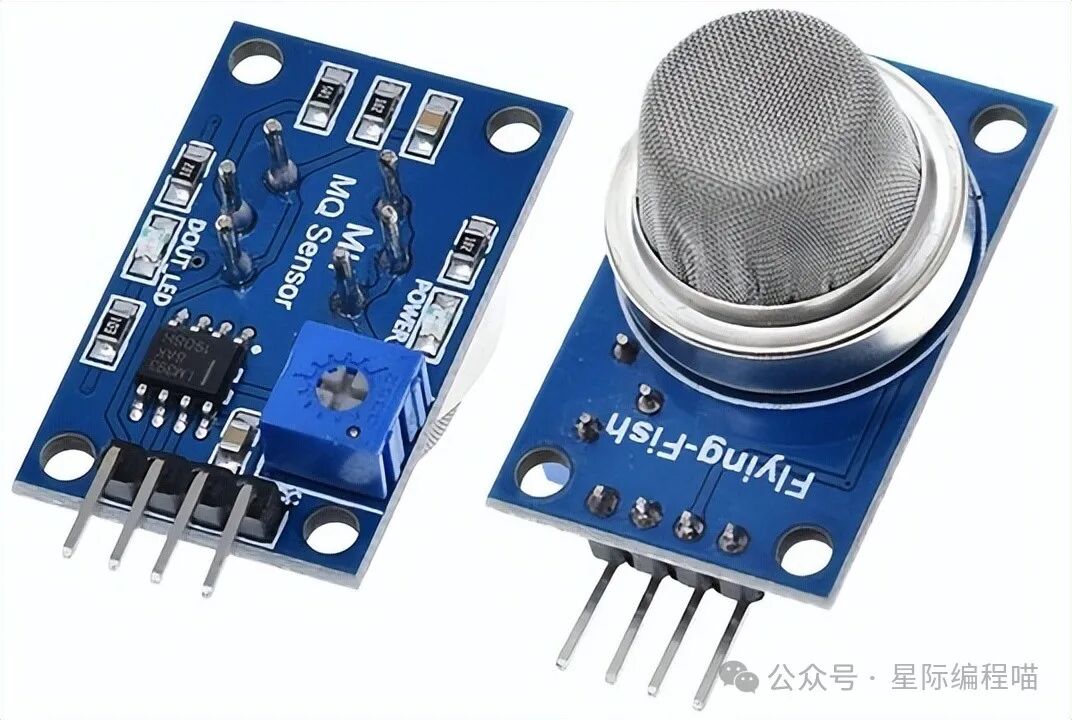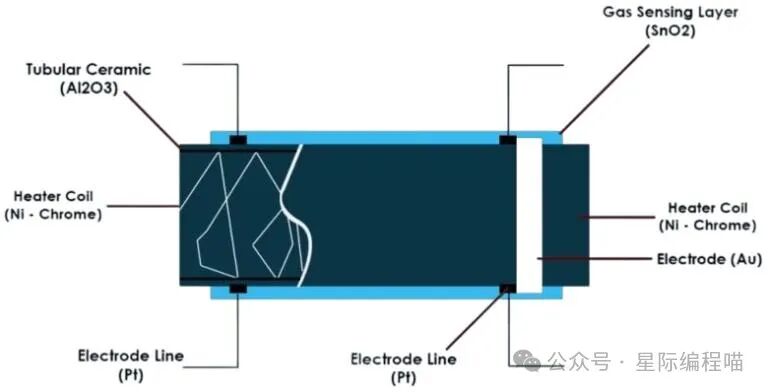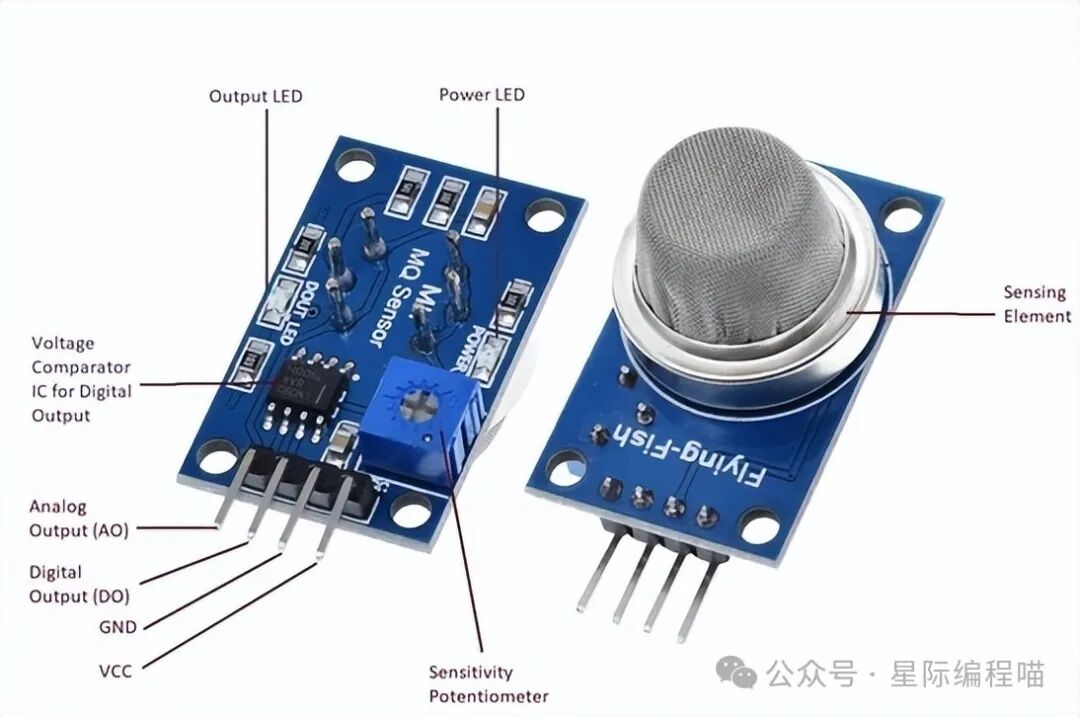Overview
Gas leaks are common safety hazards in daily life, whether it’s a gas leak in the kitchen or toxic gases elsewhere, the problem can occur at any time. Although there are many smart devices in modern homes, it would be perfect if even the “air” could be a little smarter! This project develops a simple yet efficient gas leak monitoring system using Arduino UNO, paired with the MQ2 gas sensor, to monitor gas concentration in the air in real-time. The system will immediately sound an alarm and light up an RGB LED to alert users when harmful gas concentrations exceed a set threshold, ensuring timely warnings to prevent potential dangers.
Imagine having an “invisible guardian” at home, silently protecting you by constantly monitoring air quality. It’s not just watching you enjoy snacks, but ready to remind you at that moment on the gas stove: “Hey, be careful, don’t let the kitchen turn into a fireworks show!” This system can effectively detect toxic gases and respond quickly before incidents occur, preventing potential dangers from becoming reality.
Bill of Materials
To complete this project, we need some essential components. Here’s your list of “magic” items; don’t worry, it won’t break the bank, after all, this is a “smart” project, just as smart as your wallet!

- Arduino UNO R4/R3 Development Board:This small board acts like the brain, controlling the entire system. Without it, the gas sensor is like a headless robot, unable to do anything. You only need to use it to control all external devices, such as the MQ2 sensor and LEDs, making it the “universal key” in the electronic world.
- MQ-2 Gas Sensor:This sensor acts like an air detective, capable of sensing the concentration of various harmful gases such as methane, carbon monoxide, and smoke. It sends “danger signals” from the air to the Arduino, ensuring you can respond promptly in a gas leak crisis.
- Red LED:In this project, the red LED represents the emergency alarm. It lights up whenever gas concentrations exceed the limit, signaling that the situation is urgent! You can think of it as the “firefighter” in the kitchen, but it won’t extinguish fires, just “sound the alarm”.
- Connecting Wires:These small cables are the bridges connecting various components, ensuring smooth signal transmission. Without them, the system is like a team without communication.
- C Type USB Cable:This is used to power the Arduino and is also the link between you and the development board. Without it, the Arduino is like a “phone without power”, unable to utilize its powerful functions.
- Breadboard:This is a temporary platform for building circuits. Without a breadboard, you would have to solder, which is too difficult and costly; the breadboard allows you to quickly prototype, simple and convenient.
These components combine to build a smart and practical gas leak monitoring system. Each component has its unique mission, and their common goal is to keep you safe and worry-free. As long as these hardware work together, the risks of gas leaks will have nowhere to hide!
MQ2 Gas/Smoke Sensor Module
The MQ-2 gas sensor is a multifunctional and cost-effective solution capable of detecting various gases. It can identify alcohol, carbon monoxide, hydrogen, isobutylene, liquefied petroleum gas, methane, propane, and smoke. Whether you are worried about gas leaks in the kitchen or carbon monoxide poisoning in the garage, the MQ-2 can provide accurate monitoring for you.

This sensor is affordable and easy to operate, making it a popular choice for many electronics project beginners. If you are new to gas detection, the MQ-2 is your ideal entry-level device. It not only meets the gas detection needs of most households or small laboratories but also allows you to experience the fun of tight integration between sensors and hardware. More importantly, the MQ-2 sensor is very sensitive, capable of real-time monitoring of air quality and timely alerts. In short, it’s like the “air detective” at home, helping you guard your health and prevent dangers from sneaking up on you!
If it weren’t for the MQ-2, we might still rely on our eyes, noses, and guesses to determine gas leaks, which is clearly not very reliable. This small sensor can monitor various gases and simplify complex detection tasks. It’s like a silent guardian, always ready to protect your home.
Technical Specifications
- Target Gases:Liquefied petroleum gas, propane, methane, alcohol, hydrogen, smoke
- Operating Voltage:Typically 5V (preheating time exceeds 24 hours for first use)
- Load Resistance:20KΩ
- Heater Resistance:33Ω±5%
- Sensor Resistance:10 KΩ – 60 KΩ
- Heating Consumption:<800mw
- Sensitivity:High sensitivity to gases within the detection range
- Concentration Range:200 – 10000ppm
- Preheating Duration:20 seconds (minimum)
- Operating Temperature:-10 to 50 degrees Celsius
Design and Functionality
The design of the MQ-2 sensor is very clever, consisting of an aluminum oxide tube and a thin layer of tin dioxide (SnO2). SnO2 is a semiconductor material that has low conductivity in clean air. This characteristic acts like a “quiet” guard, only becoming “active” when target gases are present, increasing its conductivity. Gas molecules react with the oxygen on the sensor’s surface, causing changes in conductivity that directly reflect gas concentration. In simple terms, it “senses the breath of the air” to tell you whether the surrounding environment is safe.

The sensor is equipped with a small potentiometer, allowing you to adjust sensitivity as needed, just like a sound engineer adjusts volume. By adjusting the sensor’s load resistance, you can make it more sensitive to certain gases, such as enhancing its response to carbon monoxide or methane. This way, you can not only detect common harmful gases but also adjust its performance in different environments, achieving a “tailored” solution that allows the sensor to work accurately in various situations.
Integration with Electronic Products
The MQ-2 sensor is typically used with a breakout board, which acts as a bridge between the sensor and the microcontroller, providing the necessary circuitry for connection. The breakout board usually contains a comparator circuit that converts the analog signals output by the sensor into digital signals, ensuring that the microcontroller can recognize and process these signals. It’s like translating complex language into a “simplified version” that the microcontroller can understand, making information transfer smoother.

Additionally, the breakout board often comes with a potentiometer, allowing you to adjust the sensor’s sensitivity as needed, ensuring a more accurate response to target gases and enabling flexible adaptation in different environments. Some breakout boards even come with a digital output that triggers an alarm when gas concentrations reach a preset threshold, acting like a “smart alarm” to notify you to take action.
Connecting the MQ2 Gas Sensor Module to Arduino
If you want the source code, please contact me privately, and we can discuss purchasing options.


Funny Story
Imagine one day you are sitting on the sofa, holding delicious food, enjoying your leisure time. It’s a beautiful afternoon, the sun is shining outside, and everything seems perfect. Suddenly, a strange smell wafts into your nose, somewhat familiar yet uncomfortable. You frown and think, “What is that smell? Did my cooking go bad?” You get up and look around, but nothing seems out of the ordinary. However, soon the smell intensifies.
You start to suspect whether there are bugs in the house or the source of smoke. Just as you are pondering, suddenly a “thud” warning sound breaks the tranquility of the air. Immediately, the RGB LED lights in the house start flashing, the red light flickering like it’s in emergency mode! The system emits a frantic alarm sound, almost deafening your ears. At this moment, your heart races: “Oh no! Is something serious happening at home?”
As the system’s warning sound blares in your ears, countless impossible scenarios flash through your mind. Could there be a fire at home? Is there a malfunction with the appliances? Or has the refrigerator in the kitchen gone rogue? You rush into the kitchen, ready to face a potential disaster.
As you look around, you discover that you forgot to turn off the gas stove! The strange smell was actually a gas leak! It turns out you were so busy cooking that you didn’t notice turning off the gas valve, turning the entire kitchen into an “invisible explosion threat”. And at that moment, the “thud” sound and the red warning light acted like divine assistance, reminding you to avoid a potential disaster.
Fortunately, with this smart gas leak monitoring system, everything turned out fine. The system intelligently reacted before you noticed, not only warning you of the gas leak but also providing a visual alert. At this moment, you can even “thank” the system: it’s like the “invisible guardian” at home, silently protecting you from any potential danger.
If it weren’t for this system, you might have been enjoying delicious food in the kitchen while gas quietly accumulated in the air, and perhaps a few minutes later, the gas concentration would have reached a dangerous level, leading to an accident. This small device, with its intelligent monitoring, real-time feedback, and immediate alarms, prevented these sudden incidents. Who says technology can’t have a sense of humor? With this system, at least you won’t be scared by the kitchen’s “pranks”, and even sudden “explosion crises” can become a thing of the past.
From then on, whenever the system sounds an alarm, you will silently think: “Thanks to you, my kitchen’s ‘pranks’ didn’t turn into real disasters.” This system has become the guardian of your home, providing peace of mind while also bringing a touch of unexpected joy.
Frequently Asked Questions
1. My MQ2 sensor often gives false alarms, what should I do?
Gas sensors can sometimes be affected by temperature and humidity. Ensure the sensor is installed in an appropriate location and avoid placing it in areas with strong airflow.
2. What should the threshold for gas concentration be set at?
This threshold needs to be adjusted based on the actual environment, gradually testing suitable values during experiments. Typically, the alarm threshold for household gas leaks is set around 300, but please make fine adjustments as needed.
Applicable Scenarios
- Home Kitchen:Installed in the kitchen to prevent gas leaks.
- Industrial Environment:Used in places where toxic gases need to be monitored, such as chemical plants.
- Laboratories:During experiments involving flammable and explosive gases, a gas leak alarm system is crucial.
Precautions
- Ensure the sensitivity of the MQ2 sensor is adjusted appropriately to avoid false alarms.
- Wires and sensor interfaces in the system should be well protected to avoid short circuits or poor contact.
- Although this system can provide timely alarms, it cannot replace professional gas leak detection equipment.
Best Practices
- Regular Calibration:To maintain detection accuracy, regularly calibrate the MQ2 sensor.
- False Alarm Prevention Design:You can add delays in the code to prevent the sensor from triggering alarms repeatedly in a short time.
- Device Protection:For MQ2 sensors that have been used for a long time, you can add heating elements to ensure the sensor operates stably over time.
Conclusion
This project not only teaches you how to use the MQ2 gas sensor and Arduino UNO to build an intelligent alarm system but also adds a sense of security to your home. Imagine if you occasionally forget to turn off the fire or fail to notice a gas leak, the system will unhesitatingly warn you, preventing potential dangers. It’s like an invisible guardian at home, always protecting you from the harm of small mistakes. And who says technology can’t have a sense of humor? With this system, kitchen mishaps can turn into “jokes” rather than “disasters”!
More importantly, through this project, you not only learn how to handle gas leak issues but also enhance your understanding of electronic projects, gaining insight into how to tightly integrate hardware and software to create a system with practical applications. By combining hardware like the MQ2 sensor and Arduino, you will find that technology is not complicated; as long as you grasp the basic principles, implementing an intelligent alarm system is not out of reach. It can improve the quality of life and make everyone at home feel more secure. Who says smart homes can’t be humorous and useful? With it, small dangers in life can be easily avoided, and protecting family safety can become easy and fun!
Please open in the WeChat client